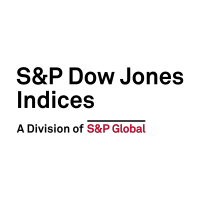Tag Archives: S&P/ASX 200
How Is Indexing Informing Income Seekers?
S&P DJI’s Jason Ye and Altere Financial’s Andy Sharp join Nadine Blayney at Ausbiz to discuss how some advisors are using indices to help inform income-seeking clients as they plan for the future.
- Categories Equities
- Other Tags
Exploring Dividends Down Under
What’s driving demand for index-based access to dividends in Australia? S&P DJI’s Jason Ye surveys the dividend landscape in the Australian market and examines how market participants are using indices in the search for yield.
- Categories Factors
-
Other Tags
Ausbiz, Australia, Australia FA, buy-write, covered call, Dividend, dividend income, dividend opportunities, dividends, factors, factors and dividends, high dividend, income strategies, Jason Ye, options, S&P/ASX 200 High Dividend Index, S&P/ASX 300, S&P/ASX Sustainability Screened Dividend Opportunities Index, yield
- Categories
- Factors
- Other Tags
- Ausbiz, Australia, Australia FA, buy-write, covered call, Dividend, dividend income, dividend opportunities, dividends, factors, factors and dividends, high dividend, income strategies, Jason Ye, options, S&P/ASX 200 High Dividend Index, S&P/ASX 300, S&P/ASX Sustainability Screened Dividend Opportunities Index, yield
Analyzing Active in Australia: Lessons from the SPIVA Australia Mid-Year 2023 Scorecard
Since 2013, our SPIVA® Australia Scorecards have shown that the majority of actively managed Australian equity funds have typically underperformed the S&P/ASX 200. According to the recently published SPIVA Australia Mid-Year 2023 Scorecard, 55% of Australian Equity General fund managers lagged the S&P/ASX 200 in the first half of 2023. Results for some fund categories…
- Categories Equities, Fixed Income
- Other Tags
- Categories
- Equities, Fixed Income
- Other Tags
S&P/ASX All Technology Index Boosted by Tech Turnaround
Following a poor 2022, the Information Technology sector has proven itself to be the outstanding performer in Australian equities in 2023. Despite rising interest rates, higher bond yields and weakening consumer confidence, market participants have still seen value in the Tech sector thus far in 2023. Tech’s turnaround has benefited the S&P/ASX All Technology Index,…
- Categories Equities
- Other Tags
Connecting the S&P/ASX 200 to U.S. Equity Icons
Many market participants have a “home bias,” typically having larger exposures to domestic securities than would be determined by their representation in the global opportunity set. Australia is no exception: compared to Australia’s 2% weight in the S&P Global BMI, Australian investors allocated an estimated 49% of their total equity allocation to domestic stocks at…
- Categories Equities
- Other Tags
Minor Impact to Headline S&P/ASX Indices from GICS Changes
Revisions to the Global Industry Classification Standard (GICS®) structure were implemented at the March S&P/ASX rebalance. The changes affect the GICS structure at all levels and involve a number of intra- and inter-sector changes for companies within the S&P/ASX 200 and S&P/ASX 300. Inter-sector changes are the reclassification of constituents to a different sector under…
- Categories Equities
- Other Tags
- Categories
- Equities
- Other Tags
A Year of Two Halves for Australian Large-Cap Equity Managers
The first half of 2022 brought steep and broad-based losses for Australian equity indices of all stripes. On a relative basis, however, active Australian Equity General funds had a decent start to 2022; as our SPIVA® Australia Mid-Year 2022 Scorecard reported, a (slim) majority of active managers in this category outperformed the S&P/ASX 200. Unfortunately…
- Categories Equities
- Other Tags
First Islamic Indices Based on S&P/ASX Series Launched
S&P DJI is launching its first S&P/ASX Shariah Indices, which aim to track the performance of Shariah-compliant stocks in the S&P/ASX 200 and the S&P/ASX 300. This launch comes in the context of increased interest in the Muslim community for Shariah investing in Australia. The Muslim community in Australia accounts for 3.2% of the population,…
A Weakening Aussie Dollar Puts Offshore Earners in the Spotlight
The days of Australian-U.S. dollar parity are becoming a distant memory, as U.S. dollar strength has seen the value of the Australian equivalent reach a recent low of just under 63 cents, a decline of over 13% from year-end levels. The weakening of the Australian dollar could have significant implications for the share prices of…
- Categories Equities
- Other Tags
Tucking in to the SPIVA Australia Mid-Year 2022 Scorecard
The semiannual S&P Indices Versus Active (SPIVA®) Scorecard1 measures the performance of actively managed funds against their corresponding benchmarks in various markets around the world. The latest Australian edition, the SPIVA Australia Mid-Year 2022 Scorecard, provides a number of interesting insights about the performance of active versus passive across active fund categories. Although the long-term…
- Categories Equities, Fixed Income
-
Other Tags
2022, Active, active management, Active vs. Passive, ASX, Australia, Australian bonds, Australian equities, Benedek Voros, IIS, Index Investment Strategy, Mid-Year 2022, Passive, passive investing, REIT, S&P Developed Ex-Australia LargeMidCap, S&P/ASX 200 A-REIT, S&P/ASX Australian Fixed Interest 0+ Index, S&P/ASX Mid-Small, SPIVA, SPIVA Australia
- Categories
- Equities, Fixed Income
- Other Tags
- 2022, Active, active management, Active vs. Passive, ASX, Australia, Australian bonds, Australian equities, Benedek Voros, IIS, Index Investment Strategy, Mid-Year 2022, Passive, passive investing, REIT, S&P Developed Ex-Australia LargeMidCap, S&P/ASX 200 A-REIT, S&P/ASX Australian Fixed Interest 0+ Index, S&P/ASX Mid-Small, SPIVA, SPIVA Australia














































